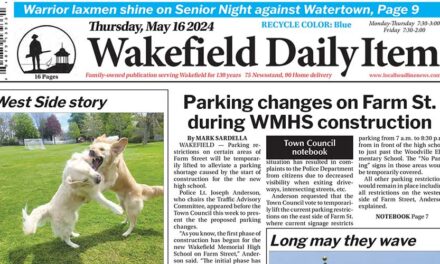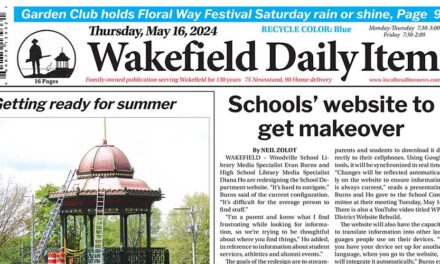Published in the January 2, 2020 edition.
By MARK SARDELLA
Since it’s the new year and a new decade, it seems like a good time for your periodic reminder that Wakefield is not in fact turning into “Condoville” or “Malden” or any of the other haughty labels that the snobs on social media like to toss around.
What’s wrong with condos? Or for that matter, Malden?
Lots of people live in condos. Young people just starting out, older people looking to downsize and people who either can’t or don’t want to deal with owning and maintaining a house. How do you suppose they feel when those who can afford to live in homes worth three quarters of a million dollars look down their noses at condo dwellers?
And what’s the issue with Malden? Is it the income level of those city dwellers? Or is it the demographics of that city’s population that people are afraid are going to spread to Wakefield?
And where are all these hated “condos” appearing? On the leafy suburban side streets of the West Side or Greenwood?
Of course not. But anyone reading local social media would think that 12-story housing projects are now springing up on West Park Drive and Madison Avenue.
In actual fact, the newer complexes that people are upset about are appearing almost exclusively in commercial/industrial districts near public transit lines.
That’s not a coincidence.
As early as 2004, the town’s Economic Master Plan was calling for exactly this type of mixed-use development in and around the downtown.
“The town should help create a range of residential living opportunities in downtown that can help rejuvenate the central business district. A mix of residential and retail uses, especially near transit, creates a vibrant environment that supports appropriate growth,” the Master Plan observed.
In November 2015, Regular Town Meeting voted 123-41 to change the Zoning Bylaw to encourage the development of multifamily dwellings and mixed-use projects in commercial/industrial zones within 2,500 feet of public transit lines. The idea was to help revitalize the downtown and Greenwood Square by adding housing in and within walking distance of the business districts.
This proposed bylaw change was not a secret. It was in all the papers and public hearings were held prior to Town Meeting to discuss it.
You can disagree with this approach. Maybe you prefer run-down, vacant factories and old, dilapidated storefronts to a shiny new apartment buildings with nice restaurants or retail on the ground-floor.
You can try to blame the Zoning Board of Appeals for allowing this “overdevelopment.” But the ZBA just applies the existing Zoning Bylaws. If a developer comes in with an application that meets all of the legal requirements, on what basis should they deny the application?
If you’re looking for someone to blame, unless you’re one of the 41 people who voted against Article 12 at Town Meeting in November of 2015, I suggest looking in the mirror.





